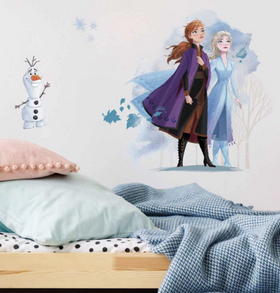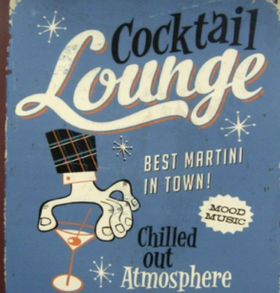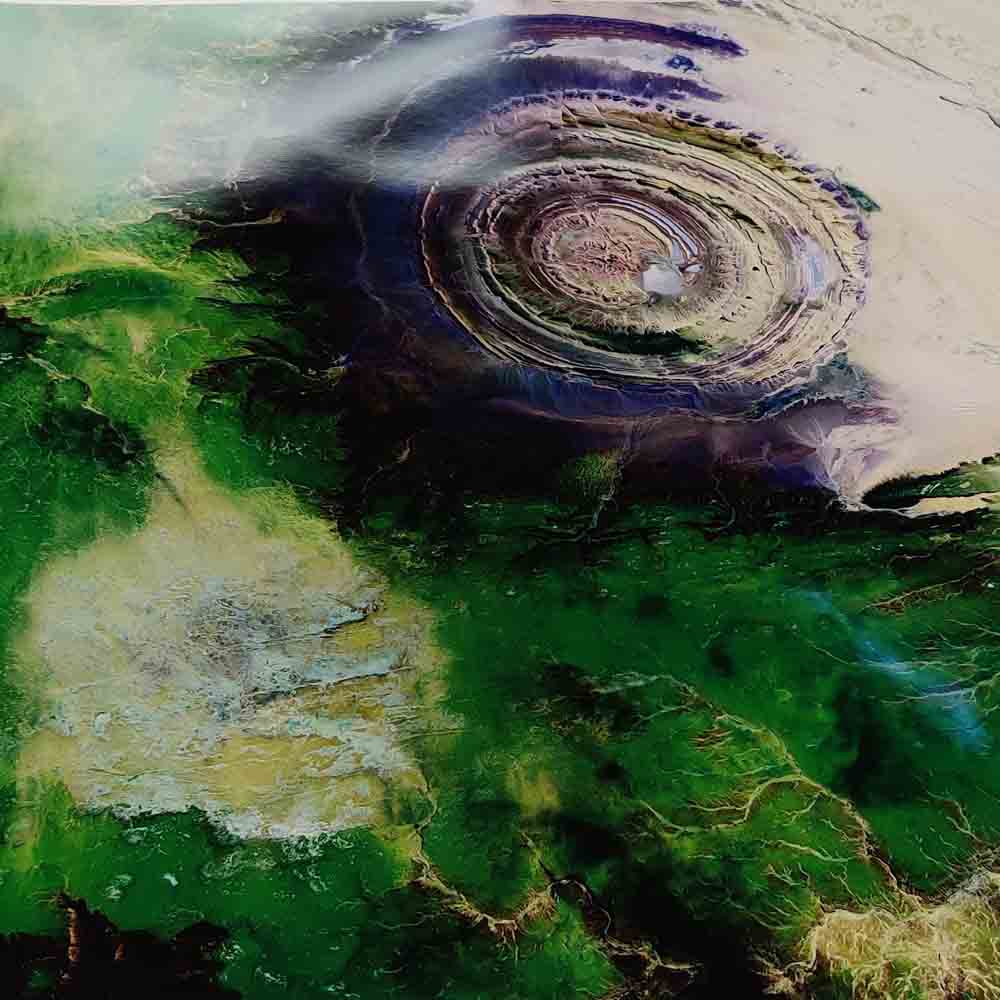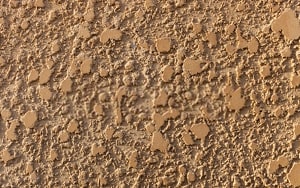Do Wall Decals Damage Paint?

There is no straight-forward answer to this question as it depends upon several factors to include what type of adhesive is applied to the decals or stickers you are purchasing, the type of preparation and quality of paints and primers used to coat the wall, the maintained temperature in the space the decal, sticker, mural, or wallpaper are installed, as well as the texture of the wall surface.
If you follow the recommendations in this article, you should have no problems removing decals or stickers from you application surface without damaging the paint.
Types of Adhesives
As mentioned in our previous blog post there are several types of adhesives applied to digital wide format print materials and they are:
- Water-based acrylic removable adhesive (cleanly removable for up to 2 years)
- Water-based acrylic repositionable adhesive (repositionable for up to 6 months)
- Solvent-based acrylic permanent adhesive
Water-Based Acrylic
You will find many manufacturers of decals or stickers utilize water-based removable or repositionable adhesives. Water-based acrylic adhesives are considered to have a lower tack value and are environmentally friendly as they contain no volatile organic compounds (VOC’s).
Water is used to separate the acrylic molecules and as the water evaporates, over time, the acrylic adhesive forms a bond to the application surface. As time progresses, mentioned above for both removable and repositionable, and more of the water evaporates, the bond becomes stronger – almost permanent, however, they can still be removed without harming your wall surface by using the techniques described in our blog post “How to Safely Remove Wall Decals”.
Solvent-Based Acrylic
Solvent-based acrylic adhesives work in the same manner as water-based, however, utilize a solvent base to separate the acrylic molecules. The solvents in these materials are not environmentally friendly but are designed for more durable and long-term applications.
Once your decal is installed the solvent will begin to cure or evaporate and as it does the bond to the application surface becomes stronger as time passes. Unfortunately, these decals, stickers or murals are difficult to remove without damaging the application surface and normally require high levels of heat or even chemicals to remove. Removal of these decals is also described in the blog article listed above.
Wallhogs offers only two of these types of adhesives on our wall decal medias. The vast majority of our decals, stickers and murals are produced on the first option – water-based removable adhesives that are applied to both our best-selling wall decal vinyl and our premium Photo-Tex polyester wall decal fabric. We also offer one permanent adhesive solution called Photo-Tex EXS for consumers that require permanent installation of their graphics.
Wall Surface Preparation & Finish
This specific topic is more than likely the most important aspect of whether your wall can be damaged by decals or stickers.
For Walls Already Painted
The proper method for installing decals or stickers is as follows:
- Unroll your decals and lay flat. Let stand at room temperature for 30-60 minutes.
- Using a damp cloth only, NO SOAP OR CLEANING CHEMICALS, wipe down the area where your decals are to be installed. If you have recently painted the walls, it is highly recommended you let he paint cure for 30 days prior to installing any type of adhesive decals or stickers. This allows the water to cure from the paint.
- Once the area has dried you may begin by peeling and adhering your decals to the application surface.
For Walls to be Painted Prior to Install
If prior to installation you will be painting the walls, follow these procedures prior to decal installation.
- Clean the wall with a soap and water mixture
- Once the wall dries wipe down with a damp rag to remove any soap residue
- Once dried and all areas are taped off apply latex primer as recommended by the manufacturer’s instructions. This is the most important step in this process as it provides the foundation for the paint to adhere to.
- Once the primer has cured or dried to the touch apply your latex paint as instructed by the manufacture.
- Once the paint has cured for a minimum of 30 days you may install your decals.
This is definitely a great deal of labor; however, not only assures you will have no issues removing decals, but will ensure your paint job lasts for years. If you just simply wipe down the wall, then apply a new coat of paint over the old you could encounter issues as the adhesion of the new paint to the old is only as good as the last paint job performed.
The type of primer and paint are also very important factors. You want to utilize a quality latex-based primer and paint. Oil-based paints will not allow your decals to adhere as the water-based adhesive will not interact well with the oils in the paint.
Paint finishes are also very important. As we all know matte or flat finishes are difficult to clean when dirtied and when applying water-based adhesive decals allow the water to absorb into the paint much faster that satin or semi-gloss finishes, which are much easier to clean prior to installing wall decals or stickers.
Wall Textures


You will find nearly all manufactures that utilize water-based adhesives will tell you they are only recommended for flat, smooth, indoor painted surfaces in a temperature-controlled environment – essentially drywall or Sheetrock that has been roller painted. This ensures no air will be able to get behind the print, thereby drying out the water in the adhesive causing failure to adhere. This is especially important for vinyl wall decals as vinyl is a much more rigid material that will not adhere to indentations in textured walls.
At Wallhogs we do offer our alternative Photo-Tex wall decal fabric that may be used on slightly textured walls such as fine orange peel or eggshell, as well as drywall and Sheetrock. As this a a polyester fabric it has no rigidity and will stay adhered to these minor surface variations.
When it comes to more moderately textured or extremely textured surfaces, as shown below, you will need to utilize a more permanent solvent-based adhesive.




Temperature Control
Most vinyl wall decal materials that include a water-based adhesive backing are intended for indoor use only in temperature-controlled environments between 68°F and 85°F (20°C to 29.44°C).
Surface temperatures of walls where the other side of the wall is facing another room will normally be the same as the ambient air temperature in the rooms, however, if the other side of the wall is an exterior outside wall there could be a temperature variance of 3° to 5° so you will need to keep this in mind. We at Wallhogs also highly recommend not installing decals to close to exhaust vents as this may cause enough temperature variance on the wall to affect it.
Slightly cooler or warmer temperatures from the recommended above really do not affect the adhesive as much as the actual vinyl material. Vinyl, like other plastics, will contract and expand with cold and heat. When this happens, it places stress on the outer edges of the vinyl and may cause it to lift from the wall, causing edge curl. When this happens the water-based adhesive is then exposed to ambient air that will begin to dry it out, thereby rendering the adhesive ineffective, no longer adhering to the application surface.
At Wallhogs we also offer our Photo-Tex Fabric Wall Decal Material that is not affected by temperatures. Since this media is manufactured as a finely woven polyester fabric temperatures do not affect it. This material can even be used outdoors.
Which Is Right for You?
As you can see there is no straightforward answer to our initial question.
If purchasing pre-printed decals, you may not have a choice in the type of material the decals are produced on. Again, the majority are mass manufactured on vinyl wall decal material with a water-based adhesive as it is the more inexpensive option.
If you are seeking to submit an image to create a custom wall decal, again, the majority of companies offer just the single vinyl material. However, at Wallhogs we provide our customers with several options to select from dependent upon your application surface and your budget. You can view and compare all of our decal materials here.





